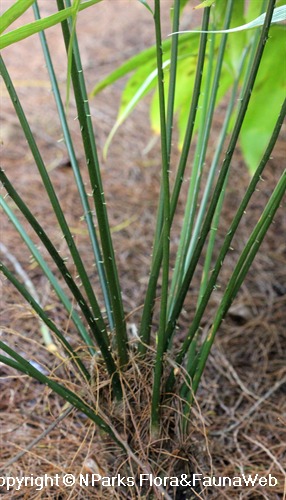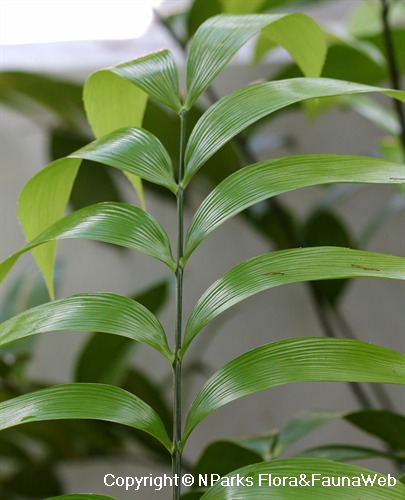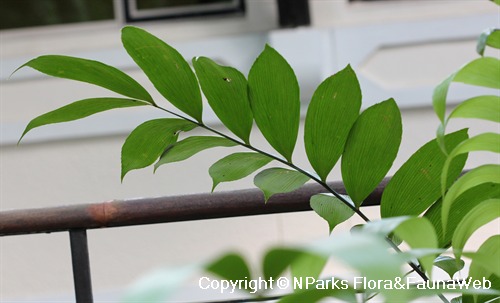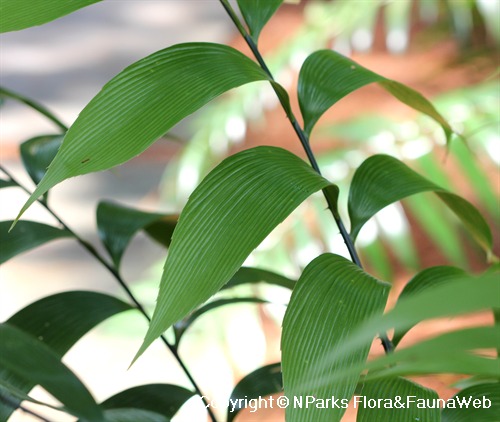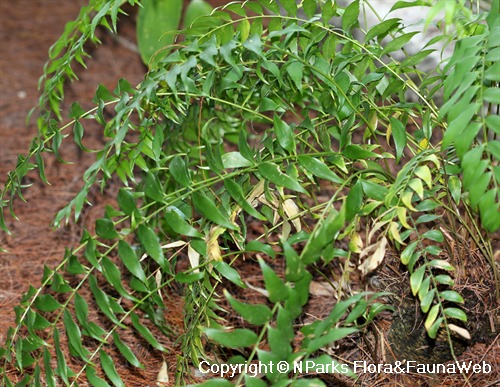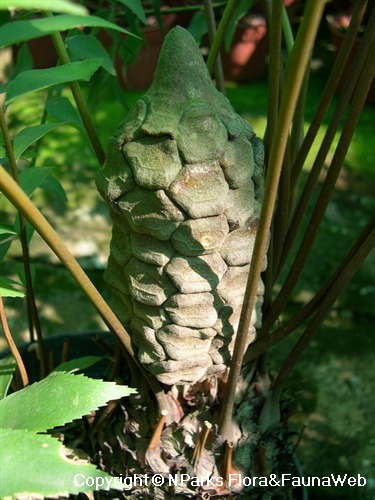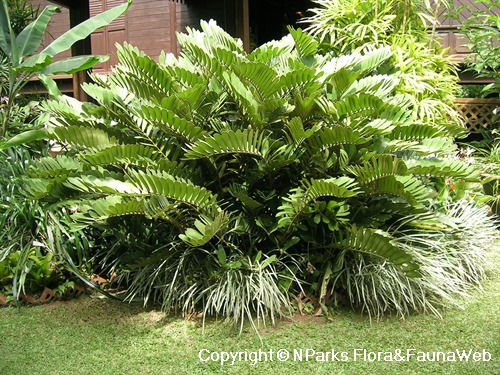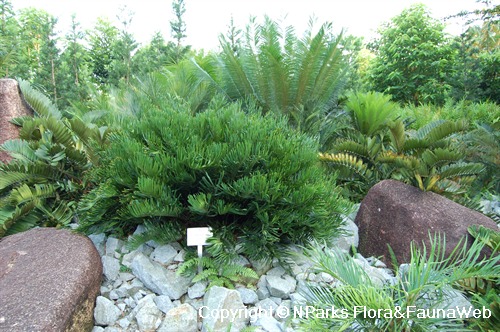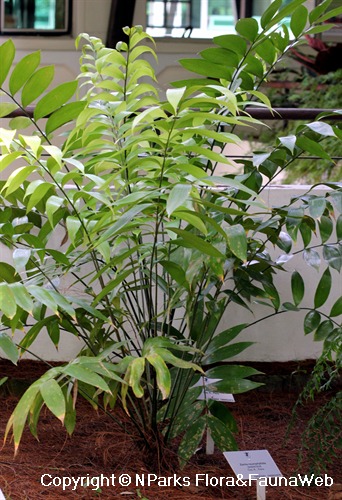
Name
Classifications and Characteristics
| Plant Division | Gymnosperms (Non-Flowering Seed Plants) (Cycad) |
|---|---|
| Plant Growth Form | Cycad |
| Lifespan (in Singapore) | Perennial |
Biogeography
| Native Distribution | Panama and Costa Rica |
|---|---|
| Native Habitat | Terrestrial (Primary Rainforest) |
| Preferred Climate Zone | Tropical, Sub-Tropical / Monsoonal |
| Local Conservation Status | Non-native |
| CITES Protection | True (Appendix II) |
Description and Ethnobotany
| Growth Form | It is a small cycad with unbranched, erect, above ground stem (up to 2 m tall). |
|---|---|
| Foliage | Each crown has 3 – 10 mature leaves. Leaves are erect to spreading and are borne on 40 – 85 cm long petiole which is densely covered with pricks. Mature leaves are feather-shaped, comprising of 10 – 24 elliptical leaflets (12 – 20 cm long and 6 – 10 cm wide), which are grooved between the veins on the upper surface and leaflet margin finely toothed. |
| Reproductive Parts - non-flowering plant | Male cones are yellowish brown, cylindrical (5 – 7 cm long and 1.5 – 2 cm wide), hairy and occurs in clusters of 3 – 5. Female cones are cream to light brown, cylindrical (10 - 15 cm long and 5 – 7 cm wide) with pointed tips. Seed is ovoid (1 – 1.5 cm wide) with red seed coat. |
| Habitat | It grows as an under-story plant on steep hills in rainforest. |
| Similar | Zamia neurophyllidia is smaller version of Zamia skinneri. As compare to Zamia skinneri, Z. neurophyllidia has smaller trunks, leaves, leaflets, pollen and seed cones, and seeds. |
| Etymology | Zamia, greek for azaniae, which means ‘pine-cone-like’, referring to the reproductive structures. Specific epithet neurophyllidia, in greek, means nerved leaves, referring to the prominent veins in the leaflets |
Landscaping Features
| Desirable Plant Features | Ornamental Foliage, Ornamental Form |
|---|---|
| Landscape Uses | Parks & Gardens, Small Gardens |
| Usage Hazard - Cons | Spines/Thorns - Leaf |
Plant Care and Propagation
| Light Preference | Semi-Shade |
|---|---|
| Water Preference | Little Water |
| Plant Growth Rate | Slow |
| Rootzone Tolerance | Moist Soils, Well-Drained Soils |
| Propagation Method | Seed |
Foliar
| Foliage Retention | Evergreen |
|---|---|
| Mature Foliage Colour(s) | Green |
| Mature Foliage Texture(s) | Smooth, Glossy / Shiny, Spiny / Bristly / Stinging |
| Foliar Type | Compound (Even-Pinnate) |
| Foliar Shape(s) | Non-Palm Foliage |
Non - Foliar and Storage
| Trunk Type (Non Palm) | Woody, Single, Underground |
|---|---|
| Root Type | Underground |
Fruit, Seed and Spore
| Mature Seed Colour(s) | Red |
|---|---|
| Mature Seed Texture(s) | Smooth, Glossy / Shiny |
| Seed Quantity Per Fruit | Numerous (>20) |
| Cone or Strobilus Type | Simple Cone(Stangeriaceae, Zamiaceae) |
References
| References | Jones, D.L. 2002. Cycads of the World. Ancient Plants in Today's Landscape. 2nd Edition. United States of America: Smithsonian Institution Press. 456 |
|---|
Image Repository
Others
| Master ID | 30802 |
|---|---|
| Species ID | 5157 |
| Flora Disclaimer | The information in this website has been compiled from reliable sources, such as reference works on medicinal plants. It is not a substitute for medical advice or treatment and NParks does not purport to provide any medical advice. Readers should always consult his/her physician before using or consuming a plant for medicinal purposes. |

